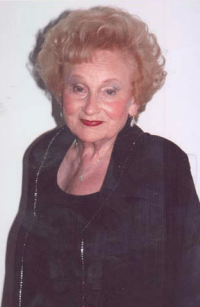Margit Feldman facts for kids
Quick facts for kids
Margit Feldman
|
|
|---|---|

Feldman in 2009
|
|
| Born |
Margit Buchhalter
June 12, 1929 Budapest, Hungary
|
| Died | April 14, 2020 (aged 90) Somerset, New Jersey, U.S.
|
| Nationality | Hungarian-American |
| Occupation | Public speaker Educator Activist |
| Known for | Holocaust survivor |
| Spouse(s) | Harvey Feldman (1953–2020) |
| Children | 2 |
Margit Buchhalter Feldman (born June 12, 1929 – died April 14, 2020) was a brave Hungarian-American woman. She was a public speaker, teacher, and activist. Margit was also a Holocaust survivor. In 1944, when she was a teenager, Margit and her family were forced into a concentration camp. Sadly, her parents were killed there right away. Margit survived by telling a small lie about her age. This helped her get sent to a work camp instead. She was finally freed from the Bergen-Belsen concentration camp on April 15, 1945. After moving to the United States, she started a family. She then spent many years sharing her powerful story with students. She continued to do this until she passed away.
Contents
Margit's Early Life
Margit Buchhalter was born on June 12, 1929. Her hometown was Budapest, Hungary. Her parents were Joseph and Theresa Buchhalter. They lived in a town called Tolcsva, Hungary.
Surviving the Holocaust
When Margit was 14, the Nazis took over Tolcsva. Her family was forced to move into a special area called a Nazi ghetto. In April 1944, her family was taken to Auschwitz. Her parents were killed there immediately. Margit was very brave. She told the German guards she was 18 years old. This lie saved her life. She was then sent to Kraków, Poland. There, she had to work at a quarry, digging rocks. The Germans tattooed "A23029" on her left arm. This was her identification number. After Kraków, she was sent back to Auschwitz.
Later, Margit was moved to a women's camp in Gruenberg. There, she met another survivor named Gerda Weissmann Klein. Margit had to go on a long, terrible march. This was called a death march. It went from Gruenberg to Bergen-Belsen. On April 15, 1945, the Bergen-Belsen camp was freed. When she was rescued, Margit was very sick. She had lung problems like pleurisy and pneumonia. She also had injuries from bombs the German soldiers set off. They tried to destroy the camp. Out of 68 family members sent to camps, Margit was one of only two who survived. After being freed, Margit moved to Sweden to get better.
Sharing Her Story
In 1947, Margit moved to the United States. She went to New York. She lived with her aunt, Harriet Boehm, and her cousins. She later became an x-ray technician.
Becoming an Educator and Activist
For many years, Margit did not talk about her experiences in the Holocaust. In the 1970s, she lived in Bound Brook with her own family. A boy from her neighborhood asked her to speak to his elementary school class. He wanted her to share her story. Margit did not want to speak in person. But she let the boy record her talking about it. He played the recording for his class. The students were very moved by her story. The boy told Margit how much it affected them. This made Margit realize how important it was to share what she went through.
In 1981, Margit helped start something important. It was the Institute for Holocaust & Genocide Studies. This was at Raritan Valley Community College. In 1991, she also helped create the New Jersey Commission on Holocaust Education. She worked with Jim McGreevey, who was a state assemblyman. In 1994, she supported a new law. This law made it required to teach about the Holocaust and genocide in New Jersey schools.
Margit was also a leader in her community. She was president of the Jewish Federation of Somerset & Warren Counties. She also led campaigns for the United Jewish Appeal and Israel Bonds. She was president of the Jewish Home for the Aged. She was also a vice president at Congregation Knesseth Israel. She was a member of Temple Sholom in Bridgewater, New Jersey.
In 2003, she helped write a book about her life. It was called Margit: A teenager's journey through the Holocaust and beyond.
Margit's Family Life
In 1953, Margit married Harvey Feldman. She met him when she was in the hospital. She was recovering from tuberculosis. The couple lived in Bound Brook, New Jersey. They had two children together.
In 2014, Margit, her family, and the New Jersey Commission on Holocaust Education created an award. It is called the Margit Feldman Teaching Award. This award goes to teachers in New Jersey. It honors those who do an "outstanding" job. They teach about the Holocaust, bias, prejudice, bullying, and bigotry. In 2016, a movie was made about Margit. It was a short documentary called Not A23029. Peppy Margolis directed it. Michael Berenbaum narrated the film.
Her Passing
Margit Feldman lived in Somerset, New Jersey. She passed away on April 14, 2020. She died from problems related to COVID-19.
Works
- with Bernard Weinstein. Margit: A teenager's journey through the Holocaust and beyond. Scottsdale: Princeton Editorial Associates (2003).
See also
 In Spanish: Margit Feldman para niños
In Spanish: Margit Feldman para niños

